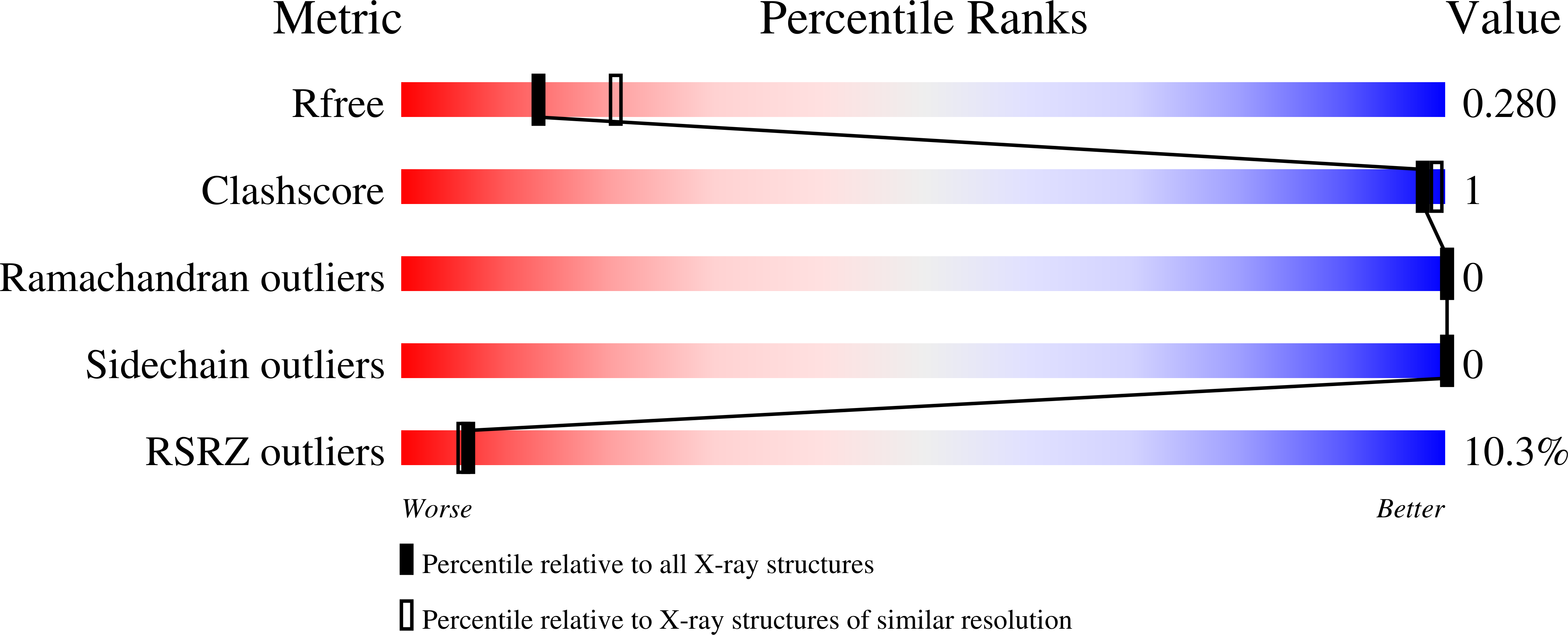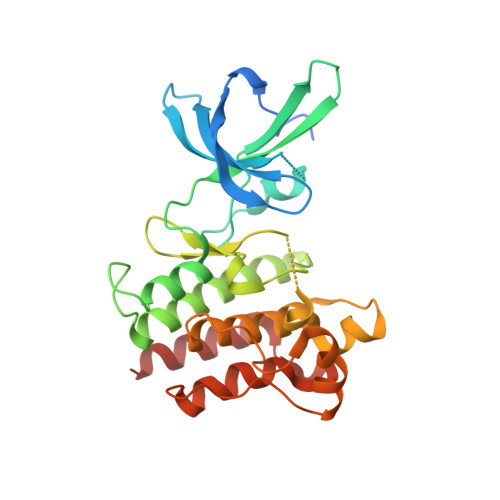Discovery of Mer specific tyrosine kinase inhibitors for the treatment and prevention of thrombosis.
Zhang, W., McIver, A.L., Stashko, M.A., DeRyckere, D., Branchford, B.R., Hunter, D., Kireev, D., Miley, M.J., Norris-Drouin, J., Stewart, W.M., Lee, M., Sather, S., Zhou, Y., Di Paola, J.A., Machius, M., Janzen, W.P., Earp, H.S., Graham, D.K., Frye, S.V., Wang, X.(2013) J Med Chem 56: 9693-9700
- PubMed: 24219778
- DOI: https://doi.org/10.1021/jm4013888
- Primary Citation of Related Structures:
4MH7, 4MHA - PubMed Abstract:
The role of Mer kinase in regulating the second phase of platelet activation generates an opportunity to use Mer inhibitors for preventing thrombosis with diminished likelihood for bleeding as compared to current therapies. Toward this end, we have discovered a novel, Mer kinase specific substituted-pyrimidine scaffold using a structure-based drug design and a pseudo ring replacement strategy. The cocrystal structure of Mer with two compounds (7 and 22) possessing distinct activity have been determined. Subsequent SAR studies identified compound 23 (UNC2881) as a lead compound for in vivo evaluation. When applied to live cells, 23 inhibits steady-state Mer kinase phosphorylation with an IC50 value of 22 nM. Treatment with 23 is also sufficient to block EGF-mediated stimulation of a chimeric receptor containing the intracellular domain of Mer fused to the extracellular domain of EGFR. In addition, 23 potently inhibits collagen-induced platelet aggregation, suggesting that this class of inhibitors may have utility for prevention and/or treatment of pathologic thrombosis.
Organizational Affiliation:
Center for Integrative Chemical Biology and Drug Discovery ?Division of Chemical Biology and Medicinal Chemistry, Eshelman School of Pharmacy ˇěDepartment of Pharmacology ˇÎLineberger Comprehensive Cancer Center, Department of Medicine, School of Medicine, University of North Carolina at Chapel Hill , Chapel Hill, North Carolina 27599, United States.

















